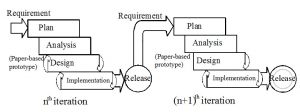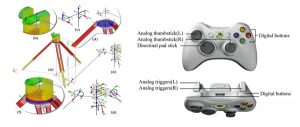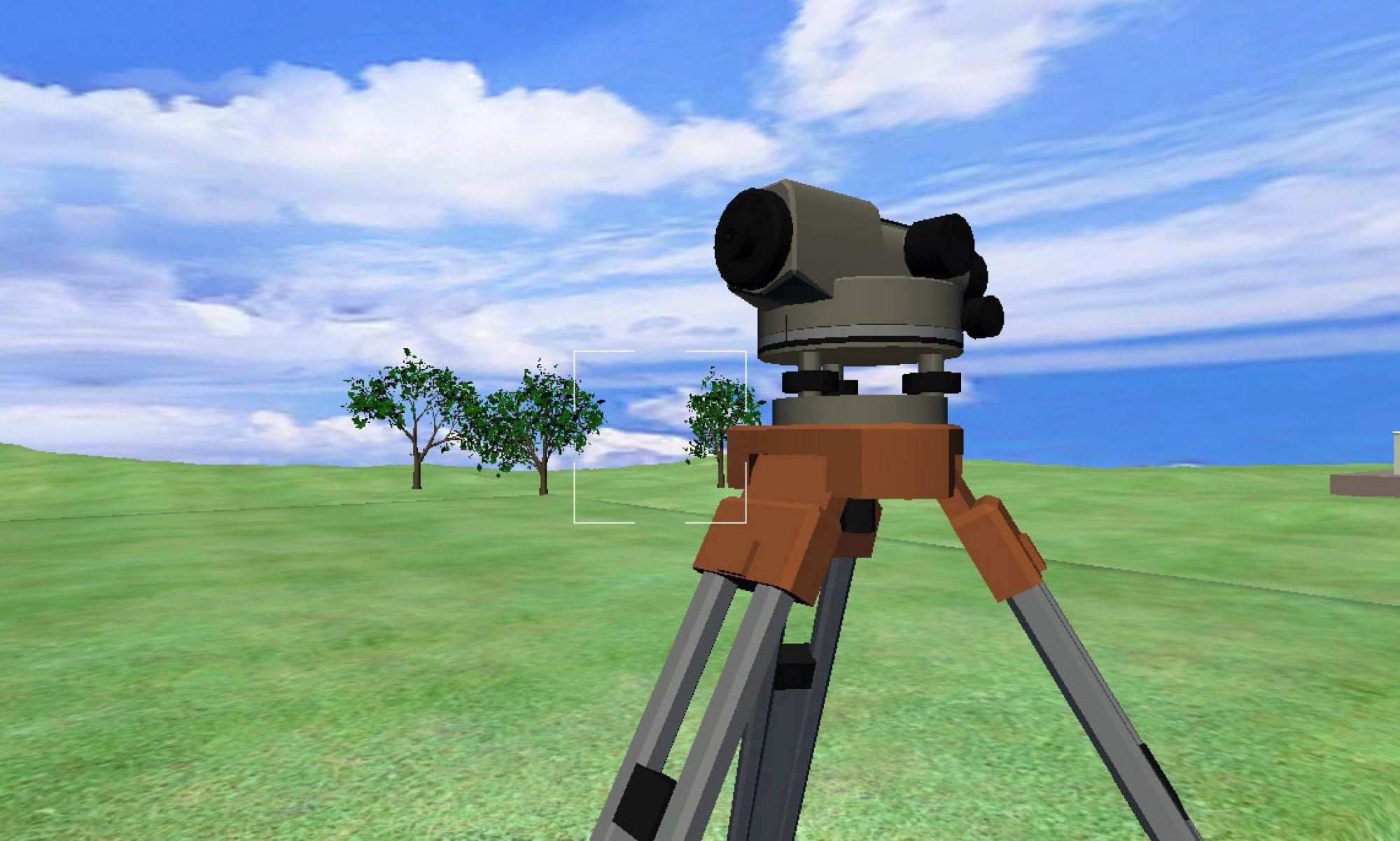
In this project, we adopted an iterative and incremental development model and a user-centered design, resulting in a software redevelopment (or improvement) approach we called I&I-UCD. The above figure illustrates the features of the I&I-UCD approach. The redevelopment process is a sequence of iterations, each of which is composed of five incremental stages. Two sub-iterations exist in both the design and implementation phases in which user tests are performed to evaluate the effects of design on implementation until all identified usability problems are addressed. The following sections show the actual contents of each phase.
1. Plan phase
Games are intrinsically non-sequential. We figured out all the concepts with two different types of documents. One is the game structure for the presence of the branching tree structure. Another one is the storyboard for the description of the appearance on-screen and the interactions between the game and the users.
2. Analysis phase

The major goal of the analysis phase is to define concrete and detailed specifications that need to be achieved by the end of the redevelopment. There are two major tasks in this phase. The first task is to analyze the structure of each joint of the surveying instruments. The second task is to gather and analyze the current material for the survey training in SimuSurvey X.
3. Design phase
The Xbox 360 controller is designed for exclusive use with the Xbox 360 game system. The correlation between the operations of the controller’s buttons, or thumbsticks, and the controls of the components on the actual instrument need to be taken into consideration. In some cases, users need to manipulate multiple functions simultaneously without interfering with additional mode switching. To keep up with experienced players, we also referenced the general designs of other simulation games on the market. The Xbox 360 controller is as shown in Figure 4; it includes two expansion slots, two analog triggers, and two analog thumbsticks, for a total of eight digital buttons (four of which make up the joypad).
4. Implementation phase
The major activities in the implementation phase include: (1) creating the 3D models of surveying instruments, accessories and scenes; (2) building the correlation between the virtual instrument and the actual instrument, and developing all the functionalities of the virtual instrument; and (3) the testing and modification of software function and usability.

